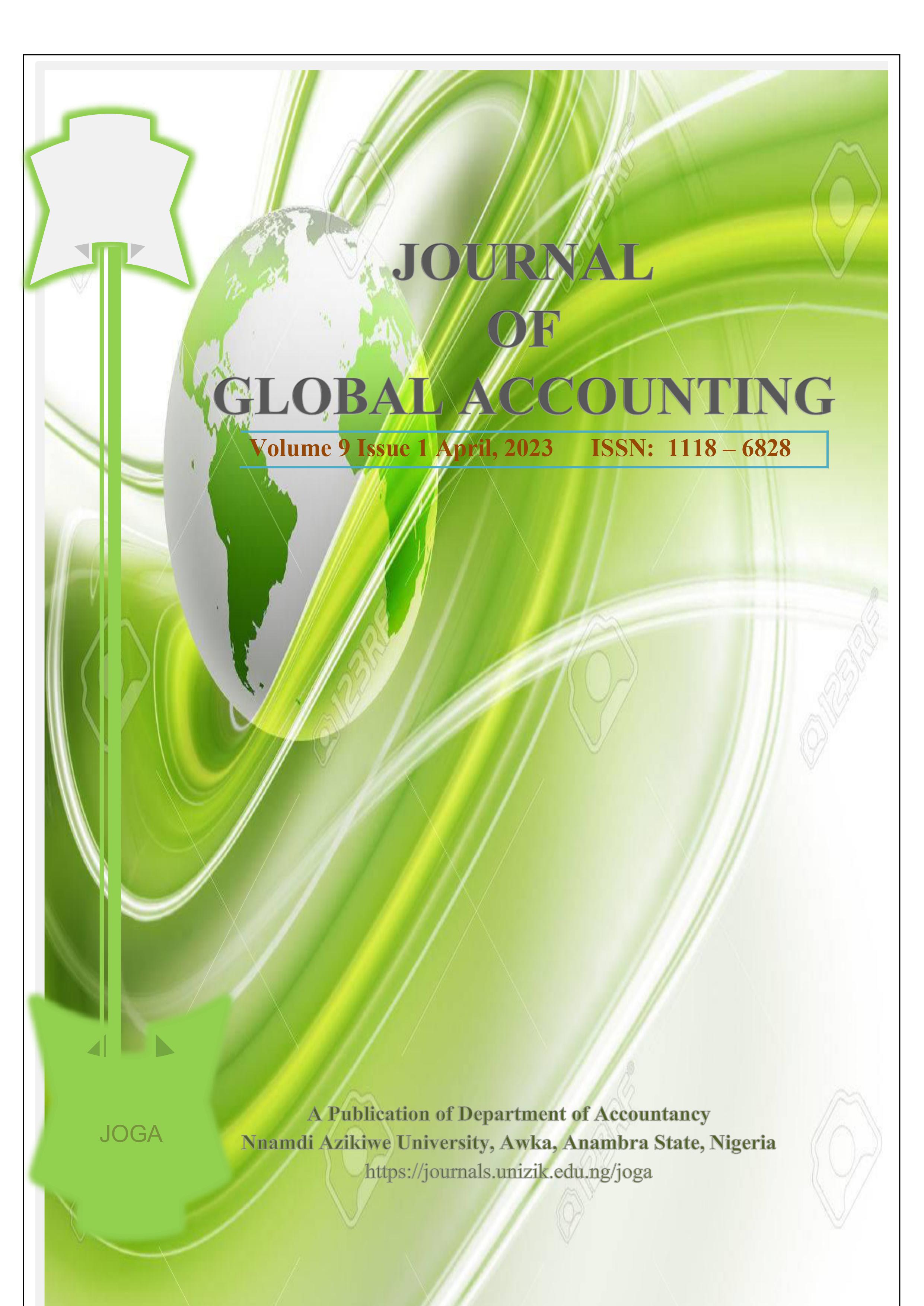OWNERSHIP STRUCTURE AND CORPORATE TAX AGGRESSIVENESS OF PUBLIC LISTED MANUFACTURING FIRMS IN NIGERIA
Keywords:
Effective tax rate, Ownership structure, Tax aggressiveness.Abstract
This study examined the effect of ownership structure on tax aggressiveness using the ex-post facto research design. Specifically, the study sought to ascertain the effects of managerial ownership, ownership concentration, institutional ownership and foreign ownership on tax aggressiveness in listed manufacturing companies.This study deployed ex-post facto research design.The industrial goods sector was chosen as the focus of study and all fourteen listed companies in the sector constituted the sample size. Data were sourced from annual reports of sampled companies for 2009 to 2018 financial years. The random effects unbalanced panel regression technique were employed for analyses. Results revealed that managerial ownership was a significant predictor of tax aggressiveness at a p value of 0.01. The result of the study also reveals that management becomes more tax-aggressive when they hold a higher portion of shares in the firm. On the other hand, ownership concentration (p value of 0.37;F= 1.0621), institutional ownership (p value of 0.32;F= 1.1804) and foreign ownership (p value of 0.77;F= 0.3755) had insignificant effects. Overall, the study model revealed that ownership structure influences tax aggressiveness of firms. It was recommended that adequate compensation may be given to tactical management to reduce their tendency to engage in managerial opportunism through extreme tax aggressiveness. Firms may also engage the services of professional tax consultants to make utmost advantage of loopholes in tax laws so that tax aggressive practices are within the confines of the law.
Downloads
Published
Issue
Section
License
Copyright (c) 2023 JOGAArticles submitted to JOGA should not have been published or are currently under review by another Journal. Kindly see the guide for the preparation of the manuscript for details. Successful submission of articles by author(s) for publication clearly implies that the work is not an infringement of any existing copyright warranty as JOGA reserves the right to be indemnified by the author(s) where any breach of such warranty is proven. For ease of dissemination and to ensure proper policing of use, papers and contributions become the legal copyright of JOGA once published unless otherwise agreed.
Permission clearance should be obtained by the author(s) where applicable for the use of any content of interest not originally created by them. This must be done before the submission of the article to JOGA. Failure to do so may lead to a lengthy delay in publication, as JOGA is unable to publish any article which has permissions pending. Thus, the rights JOGA requires are:
- Non-exclusive right to reproduce the material in the article or book chapters.
- Print and electronic rights.
- To use the material for the life of the work (for instance, there should be no time restrictions on the re-use of material).
Where tables, figures or excerpts of more than 250 words are reproduced from another source, it is expected that:
- Author(s) should obtain the necessary written permission in advance from any third-party owner of the copyright for the use in print and electronic formats of any of their text, illustrations, graphics, or other material in their manuscript. Permission must also be cleared for any minor adaptations of any work not originally created by the author(s). The author (s) should not assume that any content freely available on the web is free to use.
- Where the author adapts a significant number of any material, the author(s) must inform the copyright holder of the original work.
- Author obtains any proof of consent statements
- The author must acknowledge figure(s) and content adopted or adapted in work utilizing source(s) and further capture them in the list of references.

